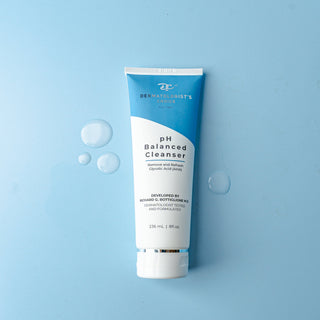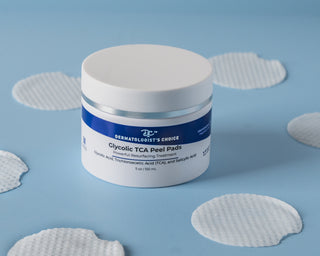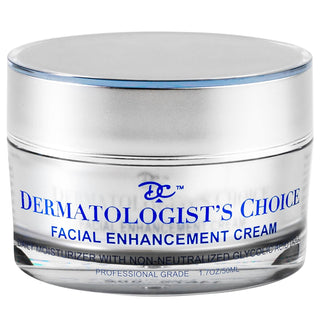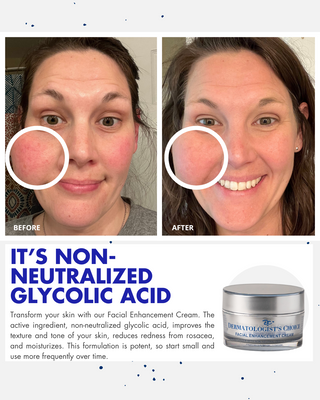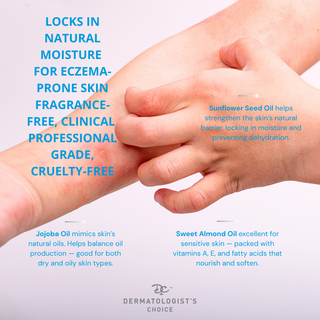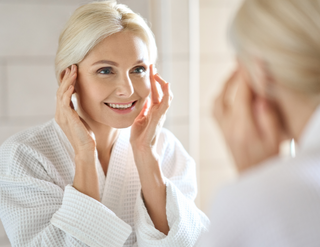I always tell patients: mature skin isn’t just dry — it’s losing collagen/elastin, the barrier is weaker, and you need products that address all of that, not just “moisturizer”.
For mature skin showing visible signs of aging — especially around the face, neck and decolletage — I developed the Ultra Anti-Aging Cream. It’s formulated with 15% non-neutralized glycolic acid (AHA) to deliver exfoliation, brighter tone, smoother texture and firmer skin. While this is technically a face/neck/eye cream rather than a “body lotion,” many of my patients over 60 will extend its use to the upper body (e.g., chest, shoulders, upper arms) where mature skin tends to show crease, sag or textured changes.
MEET THE EXPERT

Why I recommend it for mature skin:
-
Non-neutralized glycolic acid penetrates deeply, loosening the bonds of dead skin cells and stimulating collagen production.
-
Combines exfoliation with nourishing emollients (like shea butter & vitamin E) so you get smoothing + moisture support.
-
Developed by me over decades for aging skin (50+ years of experience) — so it is a “professional-grade” approach in a home solution.
If you are over 60 and want a standout product for the face/neck zone (and potentially the upper body trouble-areas) I’d place this at the top of your list.
What do dermatologists recommend for aging skin?
From my perspective as a dermatologist, here’s the advice I share:
-
Start with sun protection. Aging skin has accumulated sun damage — UV is the primary driver of wrinkles, sagging, pigment. Even when focusing on body, the same concept applies. Without sun protection, lotion alone won’t fully compensate.
-
Use a moisturizer with active ingredients. For mature/aging skin you want ingredients that help with hydration and structure (texture, tone, firmness). Non-neutralized glycolic acid and TCA are my top ingredients because they have been most effective in the 50 years I've been treating patients for aging concerns.
-
Don’t neglect the body. Many think of anti-aging just for the face — but the body shows signs too (upper arms, chest, thighs). I recommend using the Ultra Anti-Aging Cream on your body in addition to your face. The shea butter is very moisturizing and the non-neutralized glycolic acid helps improve the skin's cell turnover.
-
Apply consistently. The best product used sporadically won’t give results — daily (or twice daily in some cases) is often recommended for mature skin.
In short: Improve aging skin = hydration + targeted actives + sun protection + consistency.
Consider stepping up to a potent resurfacing cream like the Ultra Anti-Aging Cream above — especially if you’re noticing texture changes, fine lines, dark spots or overall dullness. While many lotions focus on moisture, this one targets signs of aging deeper.
What is the best lotion for “crepey” skin over 60?
“Crepey skin” — thin, fine-wrinkled, somewhat lax and often on the arms, chest, inner thighs — is common after age 60 because the skin has lost collagen, elastin, fat cushion, and hydration.
My recommendation: choose a body lotion that combines:
-
An exfoliant such as non-neutralized glycolic acid or TCA to boost cell turnover.
-
Firming/peptide or collagen-supporting ingredients. These will support the active ingredients but don't have the strength to do what the glycolic or TCA can do.
-
Deep hydrating emollients and occlusives. These can help keep the moisture your skin already has.
So: there's no one single “best” — it's more about finding one with the right combo of actives + moisture. I’d pick a richer formula and apply it morning and/or evening to the trouble zones.
In that context: if your “crepey” skin is mostly on the body (arms, chest, thighs) and showing texture, laxity, thin appearance — you could pair a specialized firming body lotion (as listed above) with your face/neck cream like the Ultra Anti-Aging Cream used in a targeted way. For example: use the body lotion daily and at least twice a week apply Ultra Anti-Aging Cream to the more affected areas for extra resurfacing. The potent glycolic acid in Ultra Anti-Aging Cream helps improve surface texture and stimulate renewal — which is very helpful for crepey skin.
What ingredients are best for mature skin?
One of the most potent ingredients for mature skin in my view is high‐strength non-neutralized glycolic acid, as used in the Ultra Anti-Aging Cream. This form of glycolic acid penetrates effectively and supports cell turnover and collagen stimulation — making it a standout for skin that’s lost some resilience and looks aged. So when you evaluate products, consider not just “glycolic acid” but non-neutralized glycolic acid since the formulation has the strength to improve the skin- most glycolic acid is very mild which doesn't have the strength to improve the thicker skin on the body.
Can body lotion help with crepey or thinning skin?
Yes — but if the skin is textured, thin, or showing visible signs of aging, a regular body lotion is likely not enough on its own. At that stage, you want a dual-approach: a good body lotion + a targeted treatment (for face/neck or visible zones) — which is where Ultra Anti-Aging Cream comes in. It acts like a “mini chemical peel” at home to resurface and firm — so mature skin that’s tipping into “visibly aged” territory will benefit more than from basic lotion alone.
Should I choose a fragrance-free lotion?
If you are using a potent active like the Ultra Anti-Aging Cream, your skin might be more sensitive — so for the surrounding body areas (arms, chest, back) I still lean strongly toward fragrance-free or minimal fragrance options to avoid irritation.
How often should I moisturize mature skin?
it's a good idea to moisturize with plain moisturizer or body lotion everyday, especially if you have more dry skin. I also recommend add in the Pre Bath Oil as it will moisturize deeper than most lotions.
Specific to treatment products: For something like the Ultra Anti-Aging Cream I advise starting 2–3 times per week at night, as your skin tolerates it — because of its potency (15% glycolic acid). As you build tolerance you might move to more frequent use. Meanwhile, your general body lotion should still be used daily (or twice daily) in the mornings and/or evenings.
What is the best time to apply body lotion?
Anytime is a great time to apply lotion. When your skin is feeling dry apply lotion to your skin. And likewise for the Ultra Anti-Aging Cream: apply at night (after cleansing) on face/neck (and optionally upper chest) so that your skin can repair and absorb without interruption. Then in the morning, apply your sunscreen + moisturizer body and face. By layering properly you get the exfoliation + renewal overnight and hydration support the next day.







